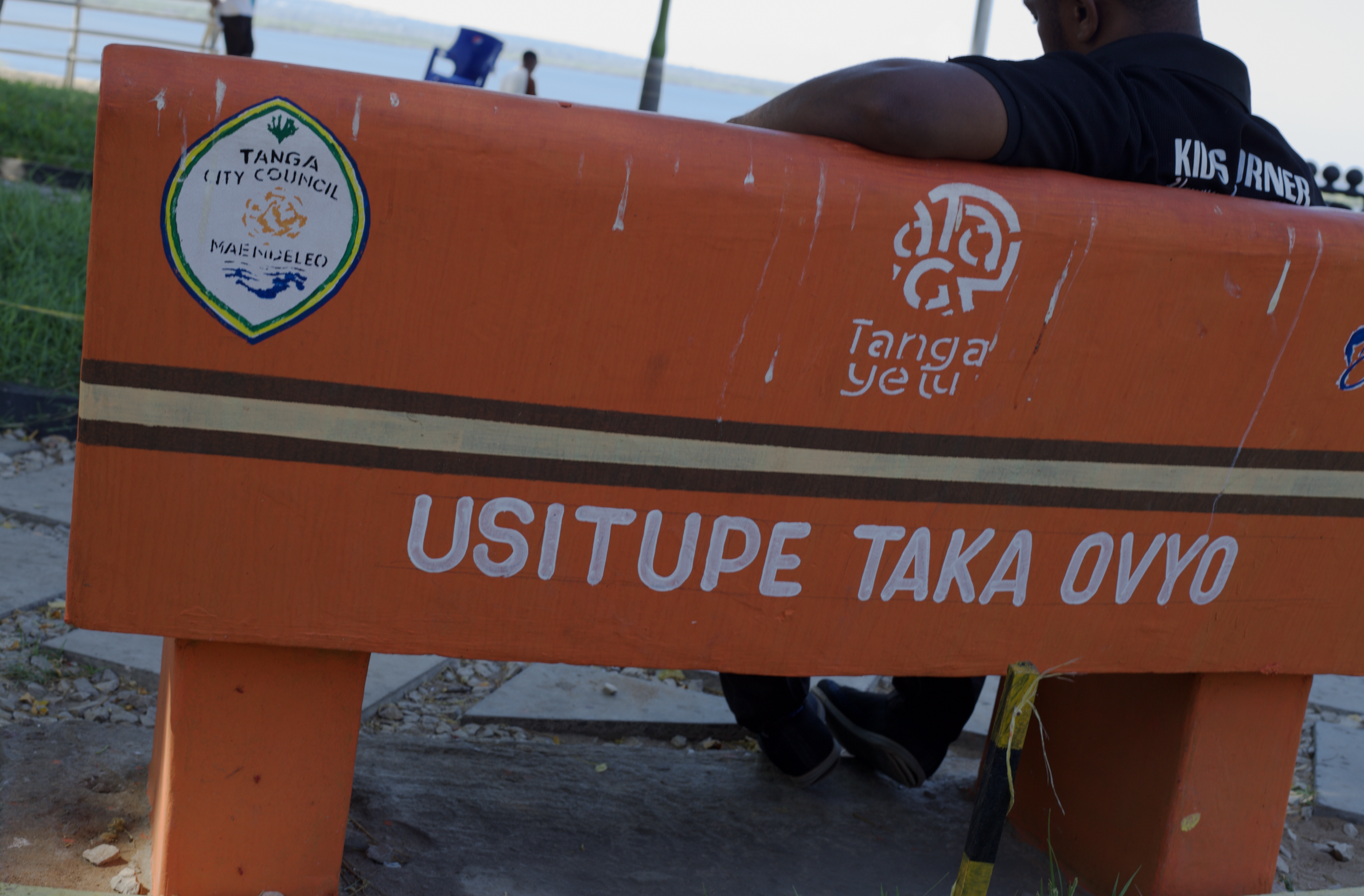
By Anthony John
For John Kajiba, a seasoned researcher with the Economic and Social Research Foundation (ESRF), the TangaYetu Initiative wasn’t merely about managing individual projects—it was fundamentally about coordinating a powerful, collective vision for profound change. Serving as a key technical support lead for TangaYetu’s Phase 1 projects, Kajiba worked tirelessly and meticulously to ensure that the initiative’s multifaceted goals translated into tangible, measurable results for Tanga’s dynamic youth and the city as a whole.
“My core role was to provide essential coordination and robust technical support across all projects,” he shared. “From the initial inception to the final completion, it was absolutely crucial to keep all stakeholders consistently informed and deeply involved at every single stage of the process.”
Turning Vision into Reality
TangaYetu Phase 1 encompassed a diverse portfolio of projects strategically aimed at youth empowerment, comprehensive urban transformation, and significant social welfare improvement. According to Kajiba, the resounding success of these projects rested heavily on meticulous coordination and collaborative effort.
“Several projects were successfully completed exactly as expected, and even surpassed our initial aspirations,” he reflected with pride. “The outcomes demonstrably aligned with our initial goals, a clear attestation to the collective efforts and dedication of everyone involved.”
One particular standout achievement was the Poultry Value Chain Project, which ingeniously incorporated the crucial Mindset Change concept. Designed to genuinely help youth see the immense potential in poultry farming as a viable and sustainable livelihood, the project deliberately went far beyond mere technical training in poultry management.
“The mindset change approach truly worked wonders,” Kajiba explained enthusiastically. “It significantly reduced dropouts and powerfully kept young people deeply engaged and committed to the project over the long term.”
By strategically focusing on changing fundamental perspectives and attitudes, the project not only empowered youth to successfully sustain and grow their poultry businesses but also nurtured invaluable qualities like resilience and unwavering determination—key attributes essential for long-term entrepreneurial success.
Managing Expectations with Transparency
While the TangaYetu Initiative commendably met many of its ambitious targets, Kajiba candidly acknowledged that effectively managing the diverse expectations of beneficiaries was an ongoing and persistent challenge throughout the phase.
“There were often very big expectations from the beneficiaries,” he admitted.
Kajiba credited the project’s consistent emphasis on transparency and proactive awareness-building for helping to effectively mitigate unrealistic demands and foster a more grounded understanding. By actively involving stakeholders at every stage of the project lifecycle and maintaining open, clear, and consistent communication channels, the dedicated team was able to successfully align expectations with what was realistically and sustainably achievable within the project’s scope and resources.
“This transparency ensured that everyone involved clearly understood the process, the anticipated outcomes, and any potential limitations,” he emphasized. “It played a vital role in building strong trust and significantly reducing misunderstandings among all parties.”
The Transformative Power of Co-Creation
Kajiba strongly believes that one of TangaYetu’s most effective and impactful strategies was its profound emphasis on the principle of co-creation.
“Co-creation is an exceptionally good approach when designing any project, regardless of its scale or complexity,” he asserted with conviction.
This truly collaborative methodology effectively brought together a diverse array of stakeholders—including youth beneficiaries, visionary city leaders, and highly specialized technical experts—to collectively design and meticulously implement projects that genuinely reflected the community’s most pressing needs and deepest aspirations. Whether it involved thoughtfully redesigning beloved public spaces like Jamhuri Park or developing cutting-edge digital skills programs, the co-creation approach ensured that all voices were heard, respected, and incorporated, resulting in tailored solutions that perfectly fit the unique context and specific requirements of Tanga.
A Collaborative Success Story
Kajiba’s tireless work unequivocally underscored the paramount importance of robust partnerships in successfully achieving the initiative’s ambitious and multifaceted goals.
“Actively involving several diverse stakeholders at all stages and consistently keeping them well-informed was absolutely critical to our overall success,” he shared, highlighting the collaborative spirit.
From dedicated local government representatives to enthusiastic youth beneficiaries, every single stakeholder played an indispensable role in shaping, refining, and effectively executing the various projects. This deeply collaborative approach fostered an undeniable sense of shared ownership, mutual responsibility, and unwavering commitment that extended far beyond the formal duration of the individual projects themselves.
Reflections on Enduring Impact
Reflecting on his impactful three years with TangaYetu, Kajiba expressed deep satisfaction with the tangible outcomes achieved. “Many of the projects we supported achieved results that precisely matched, and often exceeded, our initial objectives,” he noted with pride.
For him, the most rewarding aspect of the initiative was personally witnessing its transformative impact on the ground. Whether it was inspiring youth successfully sustaining their nascent businesses, diligent students thriving in improved school environments, or entire communities benefiting from vibrant new public spaces, TangaYetu’s legacy is undeniably one of profound empowerment and lasting positive transformation for the city.
Looking Ahead
As TangaYetu gracefully moves into its next exciting phase, Kajiba remains deeply optimistic about its continued potential and future success.
“This initiative stands as powerful proof of what truly can be achieved when strategic coordination, genuine collaboration, and deep community involvement come together in perfect synergy,” he noted, encapsulating the essence of TangaYetu.
John Kajiba’s journey with TangaYetu brilliantly exemplifies the transformative power of strategic coordination and effective stakeholder engagement in driving meaningful and sustainable change. Through his unwavering dedication and insightful leadership, ESRF has played a crucial role in laying a strong and enduring foundation for a brighter, more prosperous future in Tanga City.
“This work is much more than just completing projects—it’s fundamentally about creating lasting, positive impact and empowering an entire city to thrive and flourish for generations to come.”
